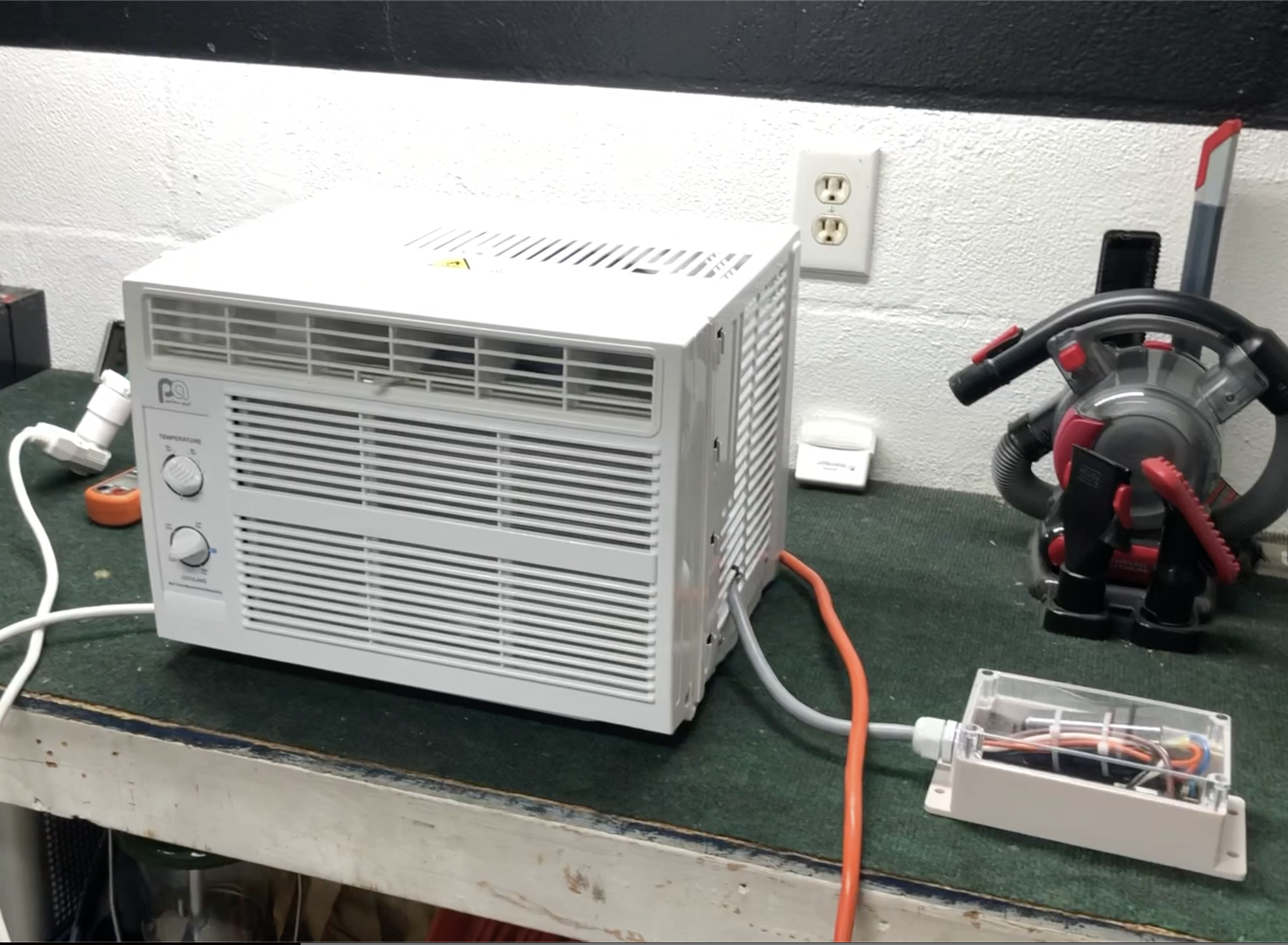Air Conditioner Soft Start in a Sunray 109
In this full-length episode I install and evaluate a Micro-Air EasyStart air conditioner soft-start module on a window AC unit in a compact camper, in this case a Sunset Park RV model Sunray 109.
Information on the Micro-Air EasyStart air conditioner soft start module can be found on the Micro-Air website:
Information on the Sunset Park RV Sunray109 compact camper can be found on their website:
https://www.sunsettrailers.com
VIDEO NOTES:
- You’ll notice I did not upload this to YouTube. That is because I have zero interest in profiting from this video either from embedded YouTube ads or endorsements.
- I do not work for MicroAir or any RV related affiliate.
- I don’t claim to be a great videographer or content producer, please forgive the quality of audio and video production.
- I do this because I’m a geek, and also because I truly want to help others out and separate “rhetoric” from actual science.
Under what circumstances would this even be a cost-effective solution?
In most cases a SoftStart module would not be very cost-effective in a small trailer like the Sunray 109, and on a tiny 5,000 BTU window unit like is pictured here. But there are a few facts that could cause a smaller generator to struggle under certain conditions:
- When temperature and humidity increases significantly, air density decreases. This causes internal combustion engines to produce less power – which in turn increases the potential that a generator will not perform at rated values under all conditions.
- The same condition mentioned above, is also true with altitude. The higher the altitude, the lower the air density.
- When the Sunray 109 is plugged into AC power (either from Shore Power, or from a generator) it believes it is on shore power. This causes the internal power supply of the camper to begin charging the 12-volt battery automatically. Typically we want this. But if you have a small generator and you’re adding up what is drawing power, some of us may forget that once we connect a generator not only will the Air Conditioner draw power, but our battery charger will too.
- Another item we don’t want to overlook is your fridge. If we have it set to “automatic” and are running on propane, once we plug in our generator the fridge will automatically switch to AC power. In this mode the fridge draws 5 amps – that’s slightly more than our air conditioner! So don’t forget to make sure you have your fridge set to gas-only mode if you want to boondock with a small generator and use your air conditioner at the same time.
What is actually happening? - The “in-rush” current spoken of in this video is that first fraction of a second each time the air conditioner’s compressor kicks on, not just the moment you turn the Air Conditioner on. For this brief fraction of a second, the air conditioner draws about 20 – 25 amps, and a little less than that each time the compressor kicks in.
- Simple math at start-up: 120 volts x 20 amps = 2400 watts. That’s why sometimes a small generator might trip the overload, and sometimes it may not. Add this with the scenario of air density mentioned above …and you have the REAL reason that small generator may trip overload even though the rated watts seem like they are enough.
- Once the intial surge has started the compressor motor, the current settles back to about 4.2 amps (about 504 watts). This brief motor starting moment is referred to as “LRA” or Locked Rotor Amperage. LRA is typically 4 to 5 times the operating current of the unit, and it happens each time an electric motor is initially started up. There are two motors in your Air Conditioner: The fan, and the compressor.
The bottom line.
A 2000 watt generator is more than adequate to run the 5000 BTU air conditioner in a Sunray 109 if we properly manage that in-rush current, and we’re careful with what other items are simultaneously running. A SoftStart module can manage the Air Conditioner’s in-rush current, or “LRA”.



